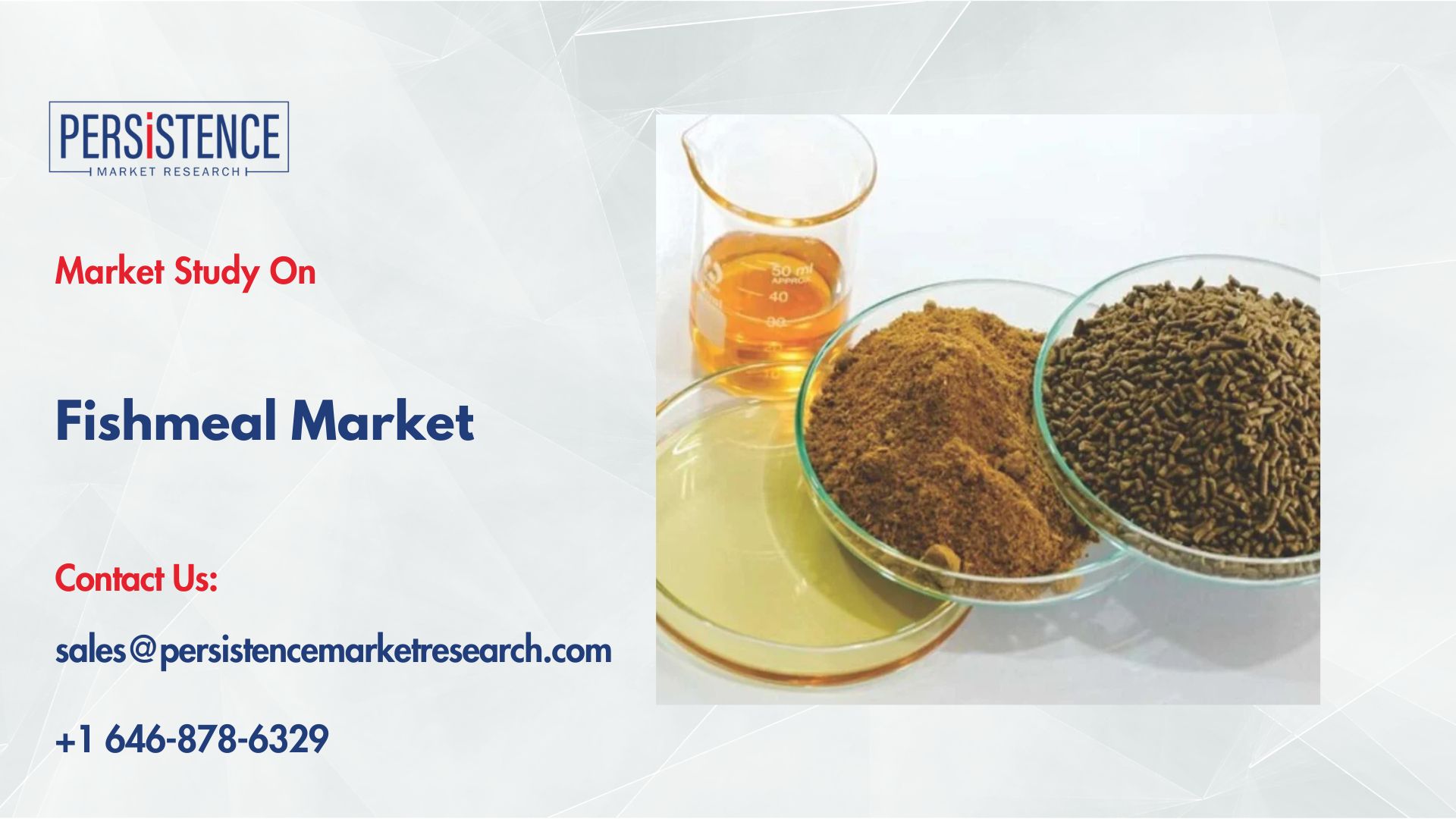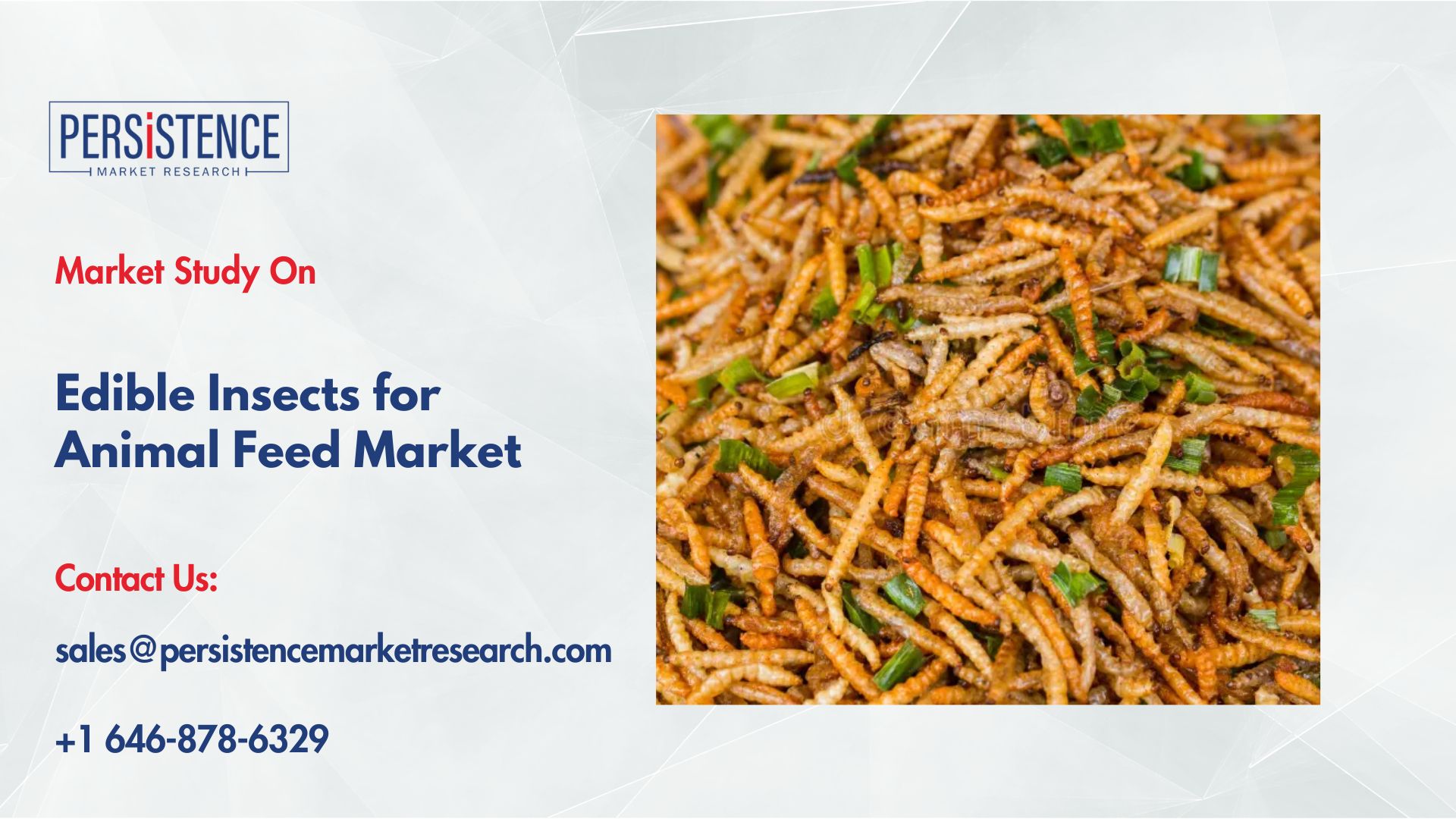Fishmeal Market Driven by Aquaculture Boom and Nutrient-Rich Animal Feed Demand

Strong 8k brings an ultra-HD IPTV experience to your living room and your pocket.
Introduction
The global fishmeal market is experiencing strong and sustained growth, underscored by rising demand for high-protein, nutrient-rich feed in the aquaculture and livestock industries. Fishmeal, produced by cooking, pressing, drying, and grinding fish and fish by-products, is a highly digestible source of essential nutrients such as proteins, amino acids, omega-3 fatty acids, and minerals. According to Persistence Market Research, the global fishmeal market is projected to rise from US$ 10.7 billion in 2025 to US$ 17.6 billion by 2032, expanding at a healthy CAGR of 7.4%.
Fishmeal has long been a cornerstone of aquaculture nutrition and is increasingly used in poultry, pig, and even pet food due to its exceptional nutritional value. However, growing concerns over marine sustainability, evolving consumer preferences, and the emergence of alternative protein sources are reshaping the market dynamics. This article explores the key trends, drivers, restraints, opportunities, and regional and competitive landscapes shaping the global fishmeal industry.
Market Outlook and Growth Potential
Fishmeal is recognized for its superior feed conversion ratio (FCR), contributing to the efficient growth and health of aquaculture species such as salmon, tilapia, and shrimp. From 2019 to 2024, the fishmeal market grew at a CAGR of 6.3%. Forecasts for the 2025–2032 period indicate an even stronger growth trajectory, with a CAGR of 7.4%, reflecting heightened global protein demand, especially from emerging economies with expanding aquaculture sectors.
Rising global seafood consumption, supported by urbanization, increasing disposable incomes, and shifting dietary preferences, has significantly elevated the demand for aquaculture. This, in turn, fuels the fishmeal industry, as fishmeal remains a staple in aquafeed formulations due to its digestibility, high protein content (often above 65%), and nutritional density.
Key Industry Highlights
• Aquaculture dominance: Fishmeal is essential for farmed fish species such as salmon, tilapia, and shrimp, which require high-protein feed for optimal growth and disease resistance.
• Livestock applications: Beyond aquaculture, fishmeal is used in pig and poultry feeds to enhance immunity, fertility, and overall animal health.
• Technology in focus: Steam-dried fishmeal, due to its high nutritional integrity, longer shelf life, and improved feed conversion efficiency, dominates market segments.
• Export dynamics: The U.S. and Canada are ramping up fishmeal exports, particularly to Asia and Europe, to capitalize on growing aquaculture production.
• Leading producers: Peru and Chile lead in fishmeal production globally, benefiting from rich fish stocks and advanced rendering technologies.
• Asia Pacific leadership: Holding a 30.2% share of the aquaculture market, Asia Pacific is the largest consumer and producer of fishmeal, led by China, India, Vietnam, Indonesia, and Thailand.
Market Dynamics
Drivers
1. Superior Nutritional Profile & Feed Efficiency
Fishmeal stands out for its high digestibility and balanced amino acid profile, which are crucial for animal health and performance. The product contains over 65% high-quality protein and digestibility of more than 90%. This enables aquaculture and livestock producers to reduce feed waste while maximizing weight gain and feed efficiency. Fishmeal also contains essential omega-3 fatty acids (EPA and DHA), calcium, phosphorus, selenium, vitamin D, and B-complex vitamins—vital for metabolism, immunity, and reproductive efficiency.
The unmatched nutritional composition of fishmeal has led to its preference over plant-based protein alternatives like soybean meal, especially in high-performance feed formulations. These attributes help improve fertility rates, reduce disease incidence, and optimize muscle development in fish, poultry, and swine.
2. Increasing Demand for Animal Protein
With the global population expected to exceed 9 billion by 2050, the demand for protein-rich food sources is accelerating. Aquaculture is playing a crucial role in bridging the protein gap, and fishmeal remains a central component of this growth. As the livestock and aquaculture industries continue to expand, particularly in Asia, Africa, and Latin America, the demand for fishmeal as a cost-effective and performance-enhancing feed solution will persist.
Restraints
1. Emergence of Alternative Proteins
Technological advancements have enabled the development of synthetic, microbial, and alternative protein sources that mimic the nutritional properties of fishmeal. Insect protein, single-cell proteins (SCP), algae-based meals, and fermentation-derived products are gaining traction as environmentally friendly, scalable, and cost-effective alternatives.
These substitutes help reduce reliance on marine ecosystems and appeal to the sustainability concerns of feed manufacturers and consumers. With increasing investment in research, commercialization of these alternatives could divert market share away from traditional fishmeal over the coming years.
Opportunities
1. Sustainable Production from By-Products
A major opportunity lies in increasing the share of fishmeal derived from fish processing by-products such as heads, bones, and trimmings. This circular economy approach reduces environmental impact, enhances resource utilization, and aligns with global sustainability goals.
According to the FAO, by 2022, 34% of global fishmeal and 53% of fish oil were produced from by-products. In 2024, the IFFO reported a 26% increase in fishmeal production, largely due to greater use of processing waste. Advances in rendering technologies have improved the nutritional value of fishmeal derived from by-products, making it a viable alternative to whole-fish sources.
Category-wise Analysis
By Type: Steam-Dried Fishmeal Leads
The steam-dried fishmeal segment is poised for strong growth, with an anticipated CAGR of 7.9% through 2032. This method preserves essential amino acids, proteins, and omega-3 fatty acids, resulting in a product with superior shelf life, digestibility, and nutritional integrity. It also minimizes oxidation and moisture, reducing spoilage risk and improving storage.
Preferred by large-scale feed manufacturers, steam-dried fishmeal offers a reliable solution for aquaculture, poultry, and livestock nutrition due to its high protein (60%-72%), digestibility, and retention of key nutrients. Compared to flame-dried methods, it offers better feed efficiency and is considered a premium feed ingredient.
By End-Use: Aquaculture Dominates
Aquaculture continues to be the largest end-user of fishmeal globally. Farmed species like salmon, tilapia, and shrimp require protein-dense feed for optimal growth, feed conversion, and survival rates. The Asia Pacific region, particularly China, India, and Vietnam, is the epicenter of this demand, owing to large-scale aquaculture operations and government support for fisheries development.
According to the Global Seafood Alliance, demand for fishmeal in aquaculture remained strong in 2024. Norway’s salmon production rose by 2%, tilapia output in Asia hit 7 million metric tons, and despite climatic challenges from El Niño, shrimp farming rebounded, reinforcing fishmeal’s critical role in feed efficiency and profitability.
Regional Insights
Europe
Europe’s fishmeal market is driven by a focus on sustainable practices, stringent regulations, and increasing demand from aquaculture and livestock sectors. European producers, supported by the European Fishmeal and Fish Oil Producers (EFFOP), generate roughly 600,000 tonnes annually—around 40% from by-products.
Sustainability certifications such as MarinTrust and Marine Stewardship Council (MSC) ensure environmentally responsible sourcing. With a growing interest in low-carbon feed and sustainable seafood, Europe remains a stronghold for high-quality fishmeal demand.
Asia Pacific
Asia Pacific dominates the global fishmeal market, both in production and consumption. Leading countries like China, Vietnam, Thailand, and India are home to large-scale aquaculture industries that heavily rely on fishmeal for growth and disease resistance.
The region's extensive coastlines and access to diverse marine resources facilitate fishmeal production. Rising disposable incomes and growing seafood demand have prompted higher consumption of protein-rich aquafeed. Vietnam, for instance, surpassed USD 4 billion in shrimp exports in 2024, boosting demand for fishmeal and increasing imports from South America.
North America
In North America, particularly the U.S. and Canada, the fishmeal market is growing through a combination of rising domestic production and export expansion. These countries are exporting to high-demand markets such as China and Norway to support aquaculture development. Technological advancements and sustainable sourcing practices are helping North American producers remain competitive.
According to the USDA, China's seafood imports reached 4.6 million metric tons in 2024, worth US$18.8 billion, creating lucrative opportunities for North American exporters. This growth, coupled with domestic applications in livestock and pet nutrition, supports the overall market expansion.
Competitive Landscape
The global fishmeal market is competitive and evolving rapidly in response to sustainability pressures and the emergence of alternative proteins. Leading companies are investing in advanced processing technologies, improving nutritional quality, and expanding production capacity, particularly in regions with abundant marine resources.
Major Players Include:
• TASA (Tecnológica de Alimentos S.A.) – Peru
• Copeinca ASA – Norway/Peru
• Oceana Group Ltd. – South Africa
• FF Skagen A/S – Denmark
• TripleNine Group A/S – Denmark
• Pesquera Diamante S.A. – Peru
These companies focus on securing sustainability certifications, leveraging vertical integration, and forming strategic partnerships to strengthen global presence. Regional players are also emerging by capitalizing on local resources and meeting niche demands.
Sustainability has become a key differentiator, with many firms adopting MSC and IFFO RS certifications to enhance brand value and meet regulatory standards. As consumer awareness of sustainability grows, companies that align with environmental best practices will likely capture greater market share.
Future Outlook
The fishmeal market is well-positioned for continued growth through 2032. While the emergence of alternative protein sources presents a challenge, the nutritional superiority of fishmeal—particularly for high-performance aquaculture species—ensures its ongoing relevance. The growing shift toward by-product utilization will further enhance the industry's sustainability profile and resource efficiency.
Technological advancements in processing, packaging, and traceability will also improve fishmeal quality, reduce waste, and increase market appeal. Additionally, rising seafood consumption in developing countries and health-conscious markets will continue to underpin demand.
To remain competitive, players in the fishmeal industry must prioritize innovation, sustainability, and supply chain transparency. Integration of digital tools and blockchain in traceability, diversification into value-added products, and alignment with global sustainability goals will define the next chapter of the fishmeal industry.
Conclusion
The global fishmeal market is undergoing a transformation driven by sustainability, innovation, and growing global protein demand. From its dominance in aquaculture to its rising application in poultry and livestock, fishmeal remains an indispensable feed ingredient due to its unmatched nutritional benefits.
While the industry faces competition from alternative proteins and regulatory challenges, its adaptability, focus on by-product utilization, and commitment to sustainable practices offer a promising future. With a projected market size of US$ 17.6 billion by 2032, the fishmeal industry is not only expanding but also evolving to meet the dynamic needs of a global population seeking sustainable and nutritious food sources.
𝐄𝐱𝐩𝐥𝐨𝐫𝐞 𝐭𝐡𝐞 𝐋𝐚𝐭𝐞𝐬𝐭 𝐓𝐫𝐞𝐧𝐝𝐢𝐧𝐠 𝐑𝐞𝐩𝐨𝐫𝐭:
• https://www.openpr.com/news/4076844/gmp-storage-market-driven-by-rising-demand-for-regulatory
• https://www.openpr.com/news/4076852/biochemistry-analysers-market-growth-driven-by-rising
• https://www.openpr.com/news/4076858/laboratory-electronic-balance-market-driven-by-precision
• https://www.openpr.com/news/4076863/animal-stem-cell-therapy-market-driven-by-advancements
• https://www.openpr.com/news/4076873/laboratory-developed-test-market-driven-by-personalized
• https://www.openpr.com/news/4076899/life-sciences-aggregate-spending-market-driven
• https://www.openpr.com/news/4076913/iv-tubing-sets-and-accessories-market-to-reach-us-1-7-bn-by-2032
• https://www.openpr.com/news/4076925/liposomes-market-to-reach-us-11-83-bn-by-2032-driven-by-drug
• https://www.openpr.com/news/4076933/stair-lifts-market-growth-driven-by-aging-population-and-demand
• https://www.openpr.com/news/4076942/non-pvc-iv-bags-market-to-reach-us-5-9-bn-by-2032-driven-by-safety
Note: IndiBlogHub features both user-submitted and editorial content. We do not verify third-party contributions. Read our Disclaimer and Privacy Policyfor details.







